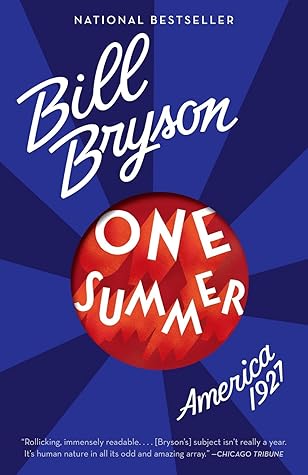More on this book
Community
Kindle Notes & Highlights
The American fliers also had an advantage over their European competitors that nobody yet understood: they all used aviation fuel from California, which burned more cleanly and gave better mileage. No one knew what made it superior because no one yet understood octane ratings—that would not come until the 1930s—but it was what got most American planes across the ocean while others were lost at sea.
In 1927, Americans were not terribly popular in Europe and not popular at all in France. America’s insistence on being repaid in full, with interest, the $10 billion it had lent to Europe during the war seemed a bit rich to the Europeans since all the money borrowed had been spent on American goods, so repaying it would mean that America profited twice from the same loans. That didn’t seem to them quite fair, particularly as the European economies were uniformly wrecked while America’s was booming.
It takes some effort of imagination to appreciate how novel radio was in the 1920s. It was the wonder of the age. By the time of Lindbergh’s flight, one-third of all the money America spent on furniture was spent on radios.
Not everyone was captivated by the new technology. Many believed that all the invisible energy flying through the air must be dangerous. One widespread belief was that birds found dead on the ground were there because they had been struck by radio waves.
was only in the fine print that the world discovered that the Volstead Act defined intoxicating liquor as anything with an alcoholic content greater than 0.5 percent—about the same level as sauerkraut. Many of those who had supported the Prohibition amendment had assumed that beer and unfortified wines would be spared. It was only now that it began to dawn on people just how sweeping—how dismayingly total—Prohibition was going to be.
The national murder rate went up by almost a third after Prohibition was introduced.
The average speakeasy paid out about $400 a month to police and city officials, which worked out to about $150 million a year in bribes in New York City alone. In short, a lot of people made a lot of money from Prohibition.
It was breathtakingly audacious of Strong to presume to instruct the Federal Reserve on how to conduct itself, and four of the reserve banks—in Chicago, San Francisco, Minneapolis, and Philadelphia—refused to go along, partly in petulance no doubt, but also in the legitimate belief that it was madness to encourage more borrowing with market values so high already. But the Federal Reserve Board, in an unprecedented action, overruled the disobedient banks and instructed them to fall into line. The cut in interest rates had an incendiary effect—it was “the spark that lit the forest fire,” in the
...more
One thing above all accounted for Ford’s competitive edge: the moving assembly line. The process was perfected bit by bit between 1906 and 1914, not so much as a progressive, systematic plan, but more as a series of desperate expedients to try to keep up with demand. The basic idea of the assembly line—or “progressive assembling,” as it was at first known—came from the movement of animal carcasses through the slaughterhouses of Chicago, which, as has often been noted, was actually a kind of “disassembly line.”
Thus it was in the summer of 1927 that Henry Ford embarked on the most ambitious, and ultimately most foolish, venture of his long life: Fordlandia. His plan was to build a model American community in the jungles of Brazil and from it run the greatest rubber-producing estate in the world.
At the heart of Farnsworth’s system was something called an image-dissector camera, which allowed him to paint (as it were) pictures across a screen by scanning them in electronically one line at a time—and to do it so quickly that the eye was fooled into thinking it was seeing a series of continuous images. Even in its earliest versions Farnsworth’s system had 150 lines, giving it a crispness that no mechanical system could ever achieve.
Sarnoff was only too happy to take advantage of this. He found, as he suspected, that listeners didn’t mind advertisements at all. By its second year on air, NBC was selling over $10 million worth of ads a year. By the early 1930s, radio advertising was worth over $40 million a year in a market that was shrunken by the Great Depression.
Among serious writers of fiction, only Sinclair Lewis enjoyed robust sales in the summer of 1927. Elmer Gantry was far and away the bestselling fiction work of the year. A satire on evangelist preachers, it was roundly condemned across the nation, especially by evangelist preachers.
According to further reports, Lindbergh also had simultaneous relationships with Brigitte Hesshaimer’s sister, Marietta, by whom he had two more children, and with a German secretary, identified only as Valeska, with whom he had yet two more children. All this extraordinary bonding was managed with such remarkable discretion that neither Lindbergh’s American family nor his biographer A. Scott Berg had the least notion of it. Quite how Lindbergh managed it all is a story waiting to be told.


